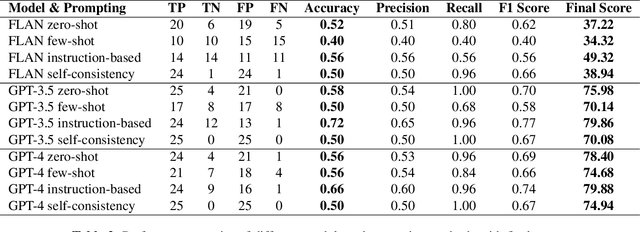Ruoling Peng
GPT-4 as Evaluator: Evaluating Large Language Models on Pest Management in Agriculture
Mar 18, 2024


Abstract:In the rapidly evolving field of artificial intelligence (AI), the application of large language models (LLMs) in agriculture, particularly in pest management, remains nascent. We aimed to prove the feasibility by evaluating the content of the pest management advice generated by LLMs, including the Generative Pre-trained Transformer (GPT) series from OpenAI and the FLAN series from Google. Considering the context-specific properties of agricultural advice, automatically measuring or quantifying the quality of text generated by LLMs becomes a significant challenge. We proposed an innovative approach, using GPT-4 as an evaluator, to score the generated content on Coherence, Logical Consistency, Fluency, Relevance, Comprehensibility, and Exhaustiveness. Additionally, we integrated an expert system based on crop threshold data as a baseline to obtain scores for Factual Accuracy on whether pests found in crop fields should take management action. Each model's score was weighted by percentage to obtain a final score. The results showed that GPT-3.4 and GPT-4 outperform the FLAN models in most evaluation categories. Furthermore, the use of instruction-based prompting containing domain-specific knowledge proved the feasibility of LLMs as an effective tool in agriculture, with an accuracy rate of 72%, demonstrating LLMs' effectiveness in providing pest management suggestions.
Embedding-based Retrieval with LLM for Effective Agriculture Information Extracting from Unstructured Data
Aug 06, 2023Abstract:Pest identification is a crucial aspect of pest control in agriculture. However, most farmers are not capable of accurately identifying pests in the field, and there is a limited number of structured data sources available for rapid querying. In this work, we explored using domain-agnostic general pre-trained large language model(LLM) to extract structured data from agricultural documents with minimal or no human intervention. We propose a methodology that involves text retrieval and filtering using embedding-based retrieval, followed by LLM question-answering to automatically extract entities and attributes from the documents, and transform them into structured data. In comparison to existing methods, our approach achieves consistently better accuracy in the benchmark while maintaining efficiency.
 Add to Chrome
Add to Chrome Add to Firefox
Add to Firefox Add to Edge
Add to Edge